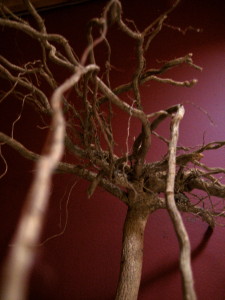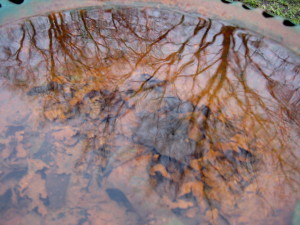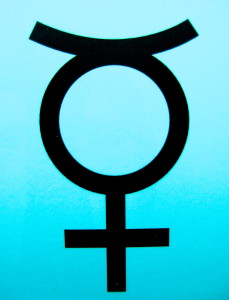
– Photo by Jan Ketchel
I awaken with a start from an action-packed thriller dream. As the storyline reassembles to waking consciousness, I survey the state of my body. My jaw and throat are tightly clenched. The muscles of my legs and arms are tight as well. My pelvis, abdomen, stomach and chest are all frozen. In my stilled state I breathe slowly, lightly, and intermittently from my upper chest. My body lies in utter stillness. My emotions are sadness and fear. My overall body sensation is one of pensive anxiety.
I begin to review the dream, what it means in this dimension of waking life. What are the parallels, the synchronistic implications for life in this day? My mind begins to tell me a story to fit the theme of the dream, to account for the vigilant state I experience in my body. My mind concludes that indeed, bad news must be on the near horizon; I must remain on alert, brace myself.
I remind myself of the many stories my mind has generated in the past to account for similar physical states of heightened alertness. I remind myself how rarely those stories have turned out to be true. I remind myself that the storyteller mind is quite creative, however, its genre is essentially fiction, not to be trusted to guide the daily ship.
These reminders, I notice, have little impact on releasing my body from the vice grip it finds itself in. I appreciate the mind’s attempt to help the body release through these reflective reminders, but I also realize that my body needs a different approach.
I direct my consciousness away from the storytelling center of the mind and enter into the state of my abdomen. I notice the tension of its grip. Slowly, I direct my breath into my abdomen, allowing it to expand like a balloon. With that, I notice the tightness in my pelvis and stomach gladly asking to follow the lead of my abdomen. They all release and my abdominal energy flows in harmony once again. I notice my breath beginning to fill my chest cavity, the muscles around my ribcage relaxing, allowing for deeper expansion as my heart opens as well.
I shift my focus to my still-clenched throat and jaw, releasing the tightness of my jaw, directing air slowly into the channel of my throat, allowing it to expand slightly more with each breath. I notice my fingers and toes spontaneously uncurling. I feel warm blood flowing throughout my body. I notice my mind is quieter, as it listens to my body, how it questions whether there is, in fact, danger at all. That thought sends a spark of alertness through my body. I quickly shift my awareness back to my body and take in a full breath, allowing all parts to release as I exhale. I’m good to go now.

flowing once again…
– Photo by Jan Ketchel
I realize that had I not gone and met my body where it was at, I would have held its tension, however, subliminally, throughout the day. It’s message to the mind would have generated an ongoing epic story, reinforcing its conclusion that I must remain on alert. That would have been the dominant experience of the day. Without awareness brought to the body, to release it from its reaction to the world of the dream, I would not have been freed to be fully present to life during the daytime.
It’s not enough to tell ourselves to relax. We must go to the body and meet it where it’s at. We must free it to accompany us through the day, so that it may correctly perceive and communicate its reactions to the here and now, offering a true gauge of the reality of the moment. I know, from years of study and observation, as well as personal experience, that like the animals who sense and communicate the momentarily arriving danger of an earthquake or oncoming storm, that the body will tell me when there is real danger. We can trust it, but must first go to meet it where it may be stuck and preoccupied with old reactions to old stories, which must be cleared if we are to be fully present and aware.
As my dream and subsequent experience reveals, we must go and meet the body where it is at, listen to its findings, and help it release old reactions if we are to fully benefit from its ability to assess and react to real and present danger. To merely shout commands from above, telling it to relax, will not suffice. We must go inward and tenderly treat ourselves to a natural release. Once we have accomplished that, all can proceed from there!
Chuck






